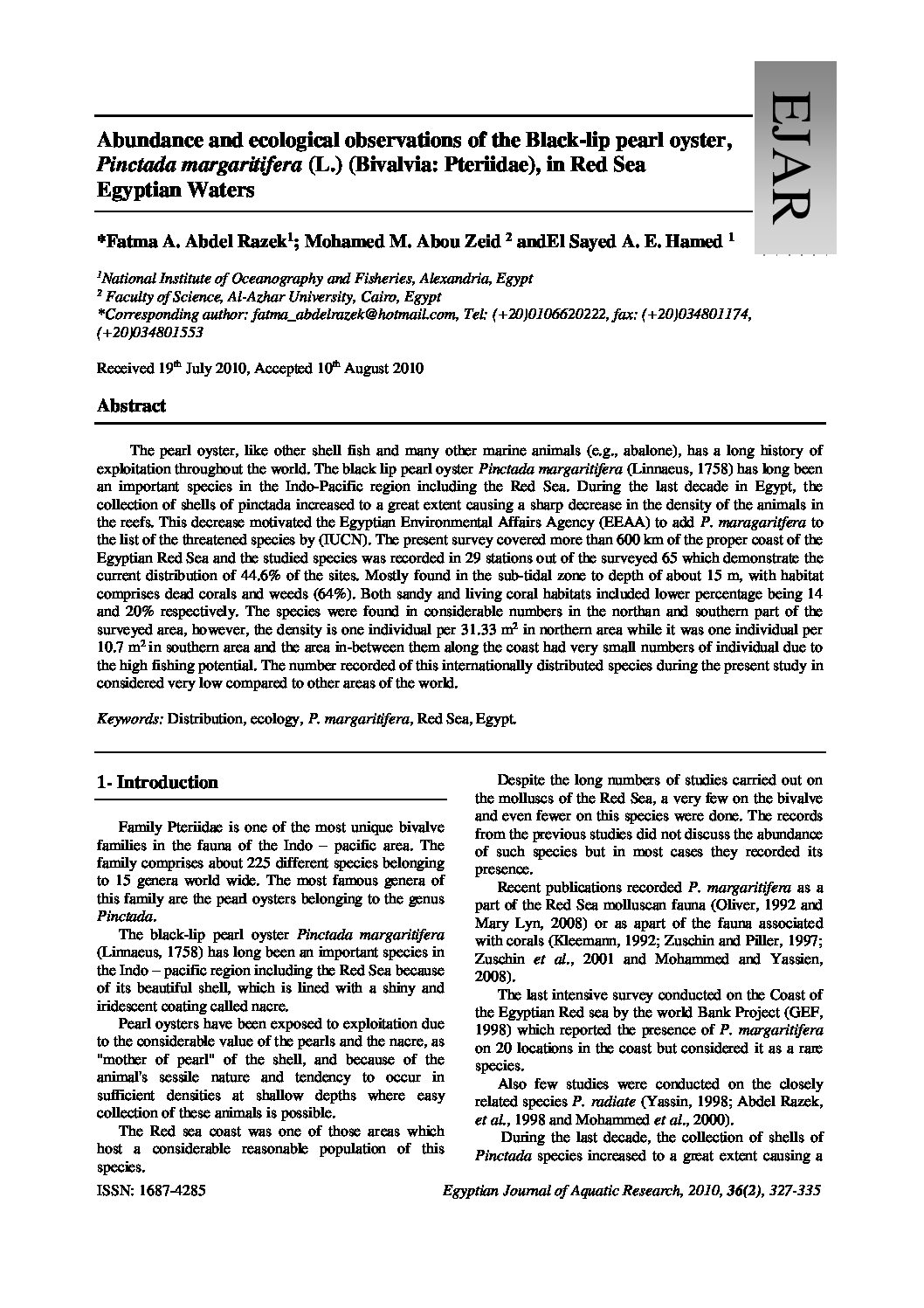Categories
vol-36Estimating and Mapping Chlorophyll-a Concentration as a Function
of Environmental Changes in Lake Manzala, Egypt using Landsat
7 ETM+ Image
Islam H. Abou El-Magd 1* and Elham M. Ali2
1
National Authority for Remote Sensing and Space Sciences, Cairo, Egypt.
2Suez Canal University, Department of Environmental Sciences, Faculty of Applied Science, Suez, Egypt
Email: [email protected] (corresponding author)
[email protected]
Received 8
th Jun 2010, Accepted 11th November 2010
Abstract
This study is aiming at developing a robust methodology for estimating Chlorophyll-a (Chl a) concentration in
one of the largest coastal lakes of Egypt, Lake Manzala, using Landsat 7 ETM+ data. Lake Manzala is one of the
economically valuable inland lakes in Egypt. It continuously suffers from excessive human impacts. Laboratory
analyses in this research highlighted that; Lake Manzala shows high value and great spatial variation of nutrients.
Nitrate concentration ranged from 1.9 to 12.3 mgL-1with lower values towards the sea connections indicating the
processes of adsorption and sedimentation, plant assimilation and flushing through the El Gamil outlet. However,
the mean value of dissolved oxygen ranged from 11.8 mgL-1
at the eastern/southern part of the lake compared to 9.4
mgL-1
at the western side. Such lower values provide further evidence of eutrophication and decomposition of
excess organic matter. The Landsat image was geometrically and radiometrically corrected, which subsequently
converted into irradiance at sensor. The remote sensing methodology based on band ratioing and regression
modelling established from in-situ measurements and the irradiance. Single band ratioing, particularly the visible
bands 1, 2 and 3, were used to establish a correlation regression model. Ratio of ETM+ band 1 and ETM+ band 3
shown the most significant ratio in estimating chlorophyll a with a maximum correlation coefficient of R2 = 0.75.
This ratio was further verified using the Chl a values of the extra sampling points and was then used to estimate the
spatial distribution of Chl a along the whole lake. Both methodology (laboratory analyses and satellite estimation)
indicated high level of Chl a at the western and southern parts of the lake due to the effect of the drainage inflow.
The produced regression model is recommended to be validated by applying onto another similar water bodies with
more sampling and validating sites.
Keywords: Chlorophyll-a, Phytoplankton, Remote Sensing, Lake Manzala, Egypt







